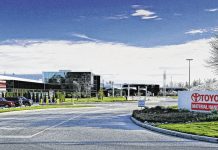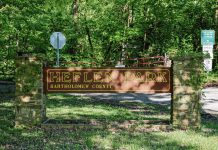Bartholomew County’s population grew at a faster rate the past five years than the state and most of its neighboring counties, according to new data from the U.S. Census Bureau.
The local population estimate increased from 79,572 in 2013 to 82,040 in 2017, representing a 3.1 percent gain, according to data released Thursday. The population totals are as of July 1 each year.
Comparably, Indiana experienced a 1.5 percent population increase from 2013-2017, while the U.S. grew 3 percent during the period.
The fact that Bartholomew County’s growth outpaced the state rate is a sign that the community is doing something right, and matching the national rate means growth is neither too fast or too slow, said Jason Hester, president of the Greater Columbus Economic Development Corp.
[sc:text-divider text-divider-title=”Story continues below gallery” ]
“We’re the type of community people want to move to,” he said.
Among neighboring counties, only Johnson (5.8 percent) had a higher population increase over this five-year stretch. Decatur (2 percent) and Jackson (1 percent) counties experienced minor population increases, while Shelby added 39 people during the period.
Jennings and Brown counties, however, experienced population declines during the timeframe. Jennings’ population declined by 596 people, or 2.1 percent, while Brown’s population declined by 18 people.
Bartholomew County
Columbus Mayor Jim Lienhoop said he considers the new data to be both positive and negative.
It’s important that the community’s infrastructure be able to keep up with its rate of growth in supporting a larger population, Lienhoop said. But modest population growth doesn’t keep pace with industrial employers’ workforce needs — particularly more workers with higher skill levels.
The mayor said he would like to see the local population grow a little faster than its current rate, but didn’t provide a target number.
“It points out the need to push talent attraction,” Lienhoop said.
Despite record levels of employment, Columbus is pushing ahead with its talent-attraction campaign, an effort to demonstrate why the city is a good place to live, work and play, and make it desirable for people to move to the community.
The local labor force — the number of people working or looking for work — topped 45,000 for the first time in 2016, Hester said. That number averaged 45,257 for all of 2017 and topped 46,000 during the peak employment months of June and July last year.
The number of people working in the Columbus area topped 44,000 for the first time in April 2017, and eclipsed 45,000 in June and July last year, Hester said. The 12-month average was 44,034.
“We in our history never had more residents working than we do today,” Hester said. “But what that points to is more job opportunities, more people entering the workforce to find a job and more people moving to the area to compete for the jobs.”
Local population growth can be attributed to having employment, housing and lifestyle opportunities that are attractive to prospective residents, Hester said.
“People are choosing to live here,” he said.
While rapid growth that would cause pains — such as lagging infrastructure support or traffic congestion — isn’t desirable, growing faster than the U.S. rate is, Hester said.
A shortage of available housing is one reason the community is not growing at a faster pace, the mayor said.
“Housing is at the top of the list, and by a wide margin. If we had room for more people, we would have more people here,” Lienhoop said.
The planned Abbey Place subdivision on the city’s northwest side, to be built by Indianapolis-based Arbor Investments, will help in that regard, the mayor said.
The project, which eventually plans to add more than 300 homes to the city, received approval by the Columbus Plan Commission in October.
Arbor Investment plans to build 313 lots and 10 common areas on 133 acres near County Road 200W, south of Lowell Road. The first phase of the project calls for 40 homes to be built this year, although none are yet underway.
The largest amount of new single-family housing activity is in Shadow Creek Farms, a Beazer Homes development on the city’s southwest side.
Among 39 residential building permits sought in Bartholomew County since the first of the year, 27 are for homes being constructed in Shadow Creek Farms, located south of West 200S near Interstate 65.
The city would like to see even more housing projects come forward, the mayor said.
Jennings County
One reason that could explain Jennings County’s population decline from 2013-17 could be changes made at Country Squire Lakes, North Vernon Mayor Michael Ochs said.
What began in 1973 as a seasonal recreation facility and turned into a year-round gated community eventually became known for drug investigations, abandoned and damaged homes, plummeting property values and discord between property owners and the neighborhood association.
However, a turnaround has been underway since 2015, with efforts to create clean and safe living. A trustee was named for 1,100 foreclosed properties, and a greater police presence caused some residents to move out.
The county’s population decrease is in contrast to industrial growth — and more jobs — in North Vernon, the mayor said.
GT Industries, a holding company of Michigan-based automotive manufacturing supplier Midway Products Group, has hired about 200 employees since announcing in 2016 that it would construct a 200,000-square-foot facility on 72 acres of land in North Vernon’s northside industrial park near State Road 3, Ochs said.
Also, Michigan-based automotive component supplier Metaldyne Performance Group announced in 2016 it would invest $31 million to expand its North Vernon operation and add 126 jobs by 2019. Ochs said the company has already created two new plants in town.
What North Vernon needs, however, is more houses to be built, particularly those at moderate- to high-end prices.
Ochs said one of his big challenges when he took office three years ago was getting some of the 4,000 people who leave Jennings County to work elsewhere daily to come back to the community for jobs.
He said he thinks recent industrial investments and more competitive wages, in addition to changes made at Country Squire Lakes, could eventually result in population gains for Jennings County.
The county gained four residents from 2016 to 2017, according to U.S. Census Bureau estimates, reversing three consecutive years of losses.
“In time, we might see the pendulum start to swing back the other way,” Ochs said.




